Nidec Engineers Taking on Challenges of Making Light, Thin, Short, and Small Products
Making light products

A vacuum cleaner’s popularity is determined by its weight.
A cordless cleaner is a product people can hold in their hands to clean their houses. Thanks to its compact size that doesn’t require much space to store and its immediate availability, cordless cleaners became a fast-selling product in recent years. Though consumers used to question the vacuum cleaner’s power to suction, and consider it as a mere ancillary item, the product now boasts a suction power as strong as that of a canister-type cleaner, and is capable enough to clean up an entire house.
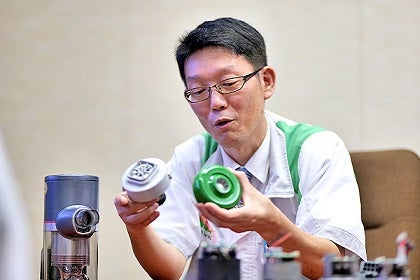
Ueda of Small Precision Motor & Solutions Business Unit brought innovation to the world of cordless cleaner motors. After gaining reputation for his contributions to the cleaning robot that became a hit product, he was assigned to develop a handy vacuum cleaner motor – a product that is required to rotate faster – in 2012.
“The motor is the second heaviest unit among all the handy vacuum cleaner’s components. Reducing the motor’s weight will make the vacuum cleaner much more attractive as a product,” Ueda says.
The vacuum cleaner uses a motor to generate a near-vacuum condition to utilize difference in pressure, and take in dust and rubbish on the floor. This is why the motor is required to generate a strong power. One could simply create a large motor to make it powerful; in fact, there is virtually no limit in motor size for canister-type vacuum cleaners, and therefore, no specific creativity is required to meet their manufacturers’ needs. That is not the case with handy-type vacuum cleaners. Their weight must be the top priority. Additionally, if one can make a small one, that would create room for various designs, and enable differentiation.
A magnet cracked!
An unexpected event that occurred after installing a magnet into a vacuum cleaner
Ueda and his team first replaced a conventional brushed motors with a brushless one, an area of Nidec’s specialty, which is thinner, more powerful, and more energy-efficient than its brushed counterparts.
“With a handy-type vacuum cleaner, its wind-generating blades is limited in size. Still, to generate the required suction strength, we must apply a high-speed motor. This is why we decided to use more poles inside the motor to make it a compact and high-power machine,” Ueda says.
Despite experiences in developing cleaning robot motors, Nidec had never been part of any full-scale development of a vacuum cleaner motor until then. There is a significant, 25-time power difference between a robot motor and one for a handy-type vacuum cleaner. Ueda and his team struggled to generate the required suction strength, with issues such as vibration emerging one after another. After solving them individually, they eventually made a super-high-speed motor that rotates 80,000 times per minute. This motor generates suction strength more than twice that of its brushed counterpart, whose rpm is 30,000, in the same size of space. After successfully reducing the motor’s weight to be as much as 40% lighter than a brushed motor, and achieving satisfactory in-house test results, Ueda and his team, in high spirits, brought the product into their customer manufacturer, where they faced a problem.
“After rotating the motor installed in a vacuum cleaner, the magnet inside the motor cracked. The motor worked OK alone, but it generated heat inside after being installed in a unit, while the pressure of the motor’s vacuum space decreased unexpectedly low,” Ueda recalls. “These phenomena caused the magnet-attached iron rotor to bend, and the adhesive to peel off due to the distortion, causing the magnet to crack.”
The new-product sales-launch schedule had been already fixed with the manufacturer, and must not be delayed. Ueda and his team made an all-out effort to create countermeasures. They coagulated the adhesive by assuming its distorted state caused by thermal expansion, to barely make in time for the vacuum cleaner’s launch.

The stick-type vacuum cleaner market is growing rapidly.
The demands for lighter cleaners are becoming increasingly strong.
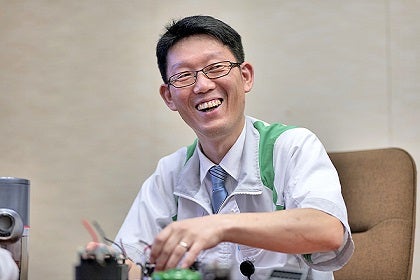
“Nidec has developed an innovative motor for vacuum cleaners.”
In 2016, this news spread across the industry even before the launch of the product, prompting a number of companies to request Nidec to supply the motor to them. Canister-type vacuum cleaners for household use are rapidly being replaced by stick-type ones, whose sales are growing by 50% annually.
Every vacuum cleaner manufacturer was desperate to keep up with the trends. Responding to such demands, Ueda and his team started supplying the motor both internally and to other companies. In 2019, the team a fundamental review of the motor’s design to release a more stable and compact, second-generation motor, followed by the 2021 launch of a third-generation motor, which is even lighter than its predecessors, because of its resin housing units. Thanks to its high-level performance, this latest product, though developed later than its rivals, is in a position to possibly achieve the largest market share.
“Vacuum cleaner manufacturers are competing against each other by trying to reduce their products’ weight by the unit of 10 grams,” says Ueda, “We must keep up with the trends. Just because we have made a successful result once does not mean we can relax now.”
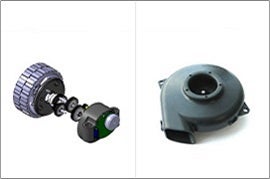
Brushless DC Motors, Blowers and Gear Units for Vacuum Cleaners
Modules that Combine the Superior Capabilities of Brushless DC Motors with Blowers, Gears and Other Components
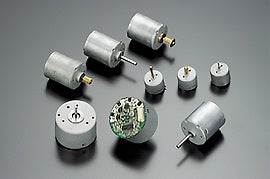
Brushless Motors
Brushless DC motors exhibit reduced energy use, long life, low noise, compact size and light weight characteristics.
Nidec is the world leader in the development and production of these high-performance motors.
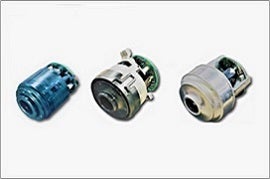
Vacuum cleaner motor lineup
Describes product data for handy cleaner motors, stick cleaner motors, and power stick cleaner motors.
